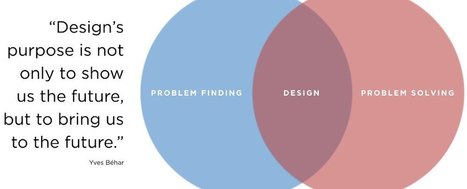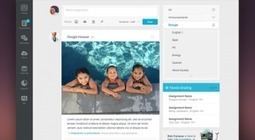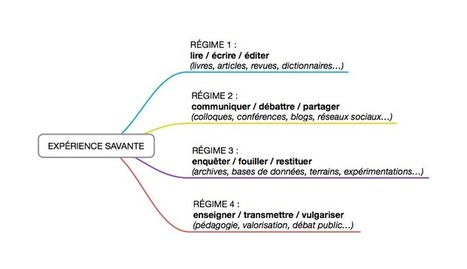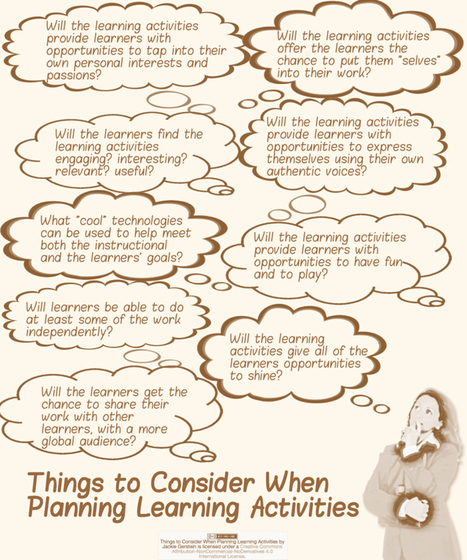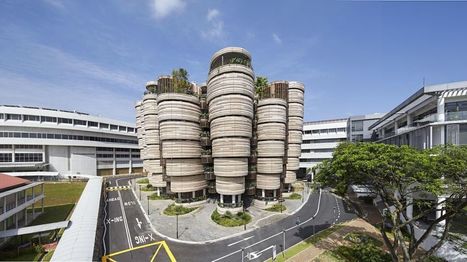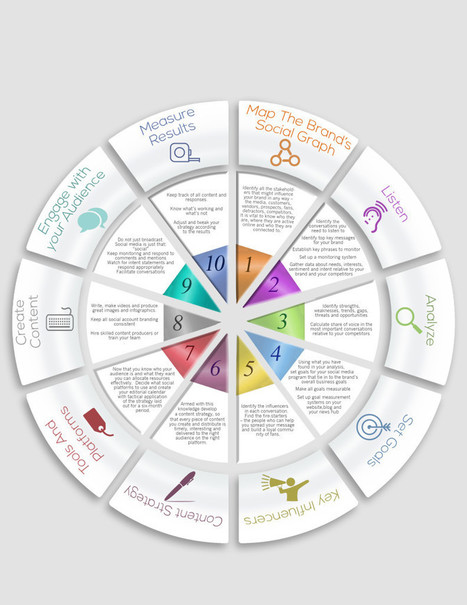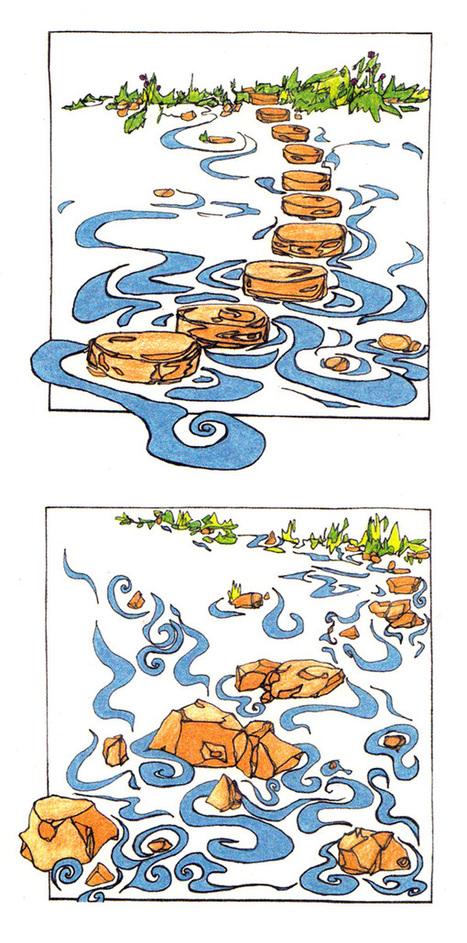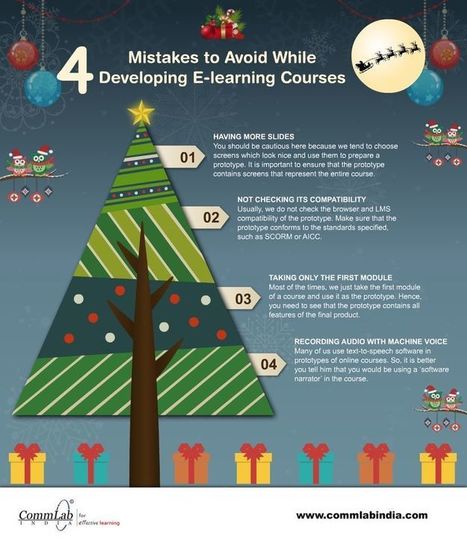Get Started for FREE
Sign up with Facebook Sign up with X
I don't have a Facebook or a X account

 Your new post is loading... Your new post is loading...
 Your new post is loading... Your new post is loading...
JOSE MANUEL LEAL's curator insight,
March 5, 2018 6:04 PM
¿Hasta qué punto afecta en el aprendizaje la arquitectura de los lugares en los que se desarrolla? ¿Una diferente disposición de los elementos puede hacernos pensar diferente, desarrollar nuestra creatividad, etc.? Y lo que es más importante, en caso de ser así, ¿cómo debería ser el diseño de ese lugar de aprendizaje ideal?
Sign up to comment

Gust MEES's curator insight,
July 5, 2016 9:12 AM
Of course, before I share this with you, I also want to remind you that I am quick to embrace and celebrate an ecosystem of diverse schools. What I describe below is neither the best or only way to create an amazing school curriculum. Yet, I can write with confidence that this would certainly contribute to a rich, engaging and rewarding school experience; one that gives ample voice and choice to learners while challenging them to grow in character, competence, confidence, and purpose.
Learn more / En savoir plus / Mehr erfahren:
Lina Kherfan's curator insight,
April 3, 2016 8:19 PM
this article talks about the importance of how children think and learn. the author stresses on the fact that for better learning, students need to have a better structure for learning, hence the title. the author states students often do not have a good structure for thinking. students tend just to memorize things and don't know how to do deep learning. the author states that teachers only teach one part of this structure. which is thinking about thinking. the structre for better thinking is not only thinking about thinking though, there is more to it. the only part of it is to monitoring and directing thinking. " When a student is reading and stops to realize he’s not really understanding the meaning behind the words, that’s monitoring. And most powerfully, directing thinking happens when students can call upon specific thinking strategies to redirect or challenge their own thinking." monitoring is being able to check up on yourself and regulate your own learning and directing is when students can take charge of their learning and direct it to what works for them in their self learning. this article talks about the importance of deeper thinking and learning and then switches to how educators can help with the process. i chose this article because i think that it is an important thing for students in K-12 grades. in my highschool, my graduating year, they had put in place a program called common core, which emphasizes this specific topic in student learning. sadly i was not able to partake in it however i do think that it is important for incoming students learn how to think and learn deeper.
Sara Jaramillo's curator insight,
May 21, 2020 1:27 PM
I agree with what this article says and I consider that education in public schools in Colombia must have into account the theory and the strategies proposed by Ritchhart. It is very important teach students to think by themselves, to take decisions in their learning, to have critical thinking skills, is more useful and meaningful for their learning, that just provide information for them to memorize it. They would not know what to do with this information, and there will be no learning.

Juan Quiñones's curator insight,
March 13, 2016 6:25 PM
Deloitte’s Human Capital professionals leverage research, analytics, and industry insights to help design and execute the HR, talent, leadership, organization, and change programs that enable business performance through people performance. Visit the “Human Capital” area of www.deloitte.com to learn more.
Learn more:
https://gustmees.wordpress.com/2014/10/03/design-the-learning-of-your-learners-students-ideas/

Cabot Solutions's curator insight,
March 14, 2016 1:43 AM
Deloitte’s Human Capital professionals leverage research, analytics, and industry insights to help design and execute the HR, talent, leadership, organization, and change programs that enable business performance through people performance. Visit the “Human Capital” area of www.deloitte.com to learn more.
Learn more:
https://gustmees.wordpress.com/2014/10/03/design-the-learning-of-your-learners-students-ideas/

Fernando de la Cruz Naranjo Grisales's curator insight,
March 16, 2016 7:21 AM
Deloitte’s Human Capital professionals leverage research, analytics, and industry insights to help design and execute the HR, talent, leadership, organization, and change programs that enable business performance through people performance. Visit the “Human Capital” area of www.deloitte.com to learn more.
Learn more:
https://gustmees.wordpress.com/2014/10/03/design-the-learning-of-your-learners-students-ideas/

Jeff Domansky's curator insight,
August 10, 2015 11:53 AM
Cover-to-cover reading begins with brilliant cover designs. 50 inspiring examp!es of creativity and highly recommended viewing. 10/10
Aaron's curator insight,
August 10, 2015 12:37 PM
Cover-to-cover reading begins with brilliant cover designs. 50 inspiring examp!es of creativity and highly recommended viewing. 10/10 
Fernando de la Cruz Naranjo Grisales's curator insight,
August 10, 2015 4:23 PM
Cover-to-cover reading begins with brilliant cover designs. 50 inspiring examp!es of creativity and highly recommended viewing. 10/10

Martin (Marty) Smith's curator insight,
December 8, 2014 9:37 AM
Liked and agreed with all 6 of these 2015 Web Design Trends when I read the post without the infogfpahic. Infographic helps and I bet wil get more shares :). M 
malek's curator insight,
December 8, 2014 11:24 AM
I like“Card” design, no, it\s not new, but I find it a good tool for designers working on responsive websites. Cards are a great way to keep things modular |

Fernando de la Cruz Naranjo Grisales's curator insight,
April 2, 2016 7:05 AM
Learning by Doing
Learn more / En savoir plus / Mehr erfahren:
https://gustmees.wordpress.com/2014/10/03/design-the-learning-of-your-learners-students-ideas/

Fernando de la Cruz Naranjo Grisales's curator insight,
April 2, 2016 7:38 AM
Learning by Doing
Learn more / En savoir plus / Mehr erfahren:
https://gustmees.wordpress.com/2014/10/03/design-the-learning-of-your-learners-students-ideas/

Bárbara Mónica Pérez Moo's curator insight,
April 4, 2016 10:43 PM
Learning by Doing
Learn more / En savoir plus / Mehr erfahren:
https://gustmees.wordpress.com/2014/10/03/design-the-learning-of-your-learners-students-ideas/

Saberes Sin Fronteras OVS's curator insight,
August 10, 2015 2:11 PM
A personal learning environment (PLE) is a solution for keeping up with the rapid pace of knowledge change. Some say it is a concept, while others say it is a technology. I think a good definition is this: a self-directed and evolving environment of tools, services and resources organized by a person seeking a way to accomplish lifetime learning, to create, and to connect with others of similar interests. Because it is personalized, everyone’s PLE will be unique. Because it is collaborative, information may be continually created and shared. In the workplace, designing a personal learning environment has the potential to partially replace conventional courses. Learn more / En savoir plus / Mehr erfahren: http://www.scoop.it/t/21st-century-learning-and-teaching/?tag=PLE http://www.scoop.it/t/21st-century-learning-and-teaching/?tag=design https://gustmees.wordpress.com/2014/10/03/design-the-learning-of-your-learners-students-ideas/ 
Andres Garcia Alvarez's curator insight,
August 10, 2015 6:30 PM
A personal learning environment (PLE) is a solution for keeping up with the rapid pace of knowledge change. Some say it is a concept, while others say it is a technology. I think a good definition is this: a self-directed and evolving environment of tools, services and resources organized by a person seeking a way to accomplish lifetime learning, to create, and to connect with others of similar interests. Because it is personalized, everyone’s PLE will be unique. Because it is collaborative, information may be continually created and shared. In the workplace, designing a personal learning environment has the potential to partially replace conventional courses.
Learn more / En savoir plus / Mehr erfahren:
http://www.scoop.it/t/21st-century-learning-and-teaching/?tag=PLE
http://www.scoop.it/t/21st-century-learning-and-teaching/?tag=design
https://gustmees.wordpress.com/2014/10/03/design-the-learning-of-your-learners-students-ideas/

Cercle d'autodidactes 's curator insight,
August 14, 2015 9:19 AM
L'autodidaxie comme discipline d'apprentissage retrouvera-t-elle la cote auprès des employeurs? Pourquoi pas offrir le diplôme à la carte ?

Luis Cano's curator insight,
June 5, 2015 10:05 AM
Check this out 9 very easy tool to help you make great designs ...

María Dolores Díaz Noguera's curator insight,
May 19, 2015 8:02 AM
Diseñando creativamente...Questions to Ask Oneself While Designing Learning Activities | Design | Learning To L... | @scoopit via @knolinfos http://sco.lt/...
Nancy Jones's curator insight,
May 20, 2015 3:45 PM
I like the comment that suggest also adding "Do they care?" 
Dr. Deborah Brennan's curator insight,
May 24, 2015 4:57 PM
more questions uoon which to reflect when designing lessons

Tony Guzman's curator insight,
March 16, 2015 9:37 AM
This article shares a 10 point social media strategy guide. Anyone using these points already? 
Amelie Hyams's curator insight,
March 19, 2015 4:06 PM
Always great to have a social media plan. This template makes creating one pretty straightforward. 
Alberto's curator insight,
March 26, 2015 6:12 PM
Define Your Social Media Strategy: Dr Alberto Empowers |






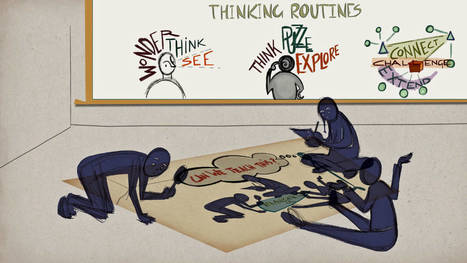


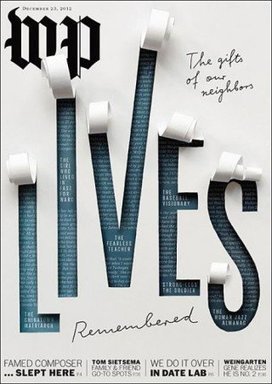
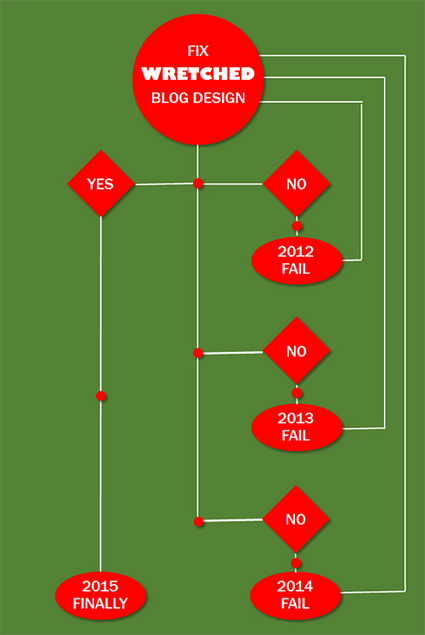
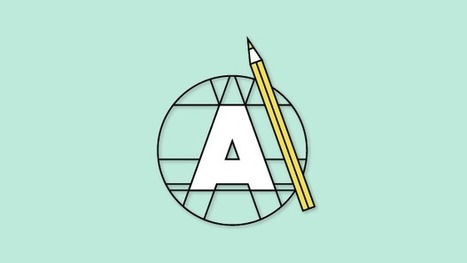


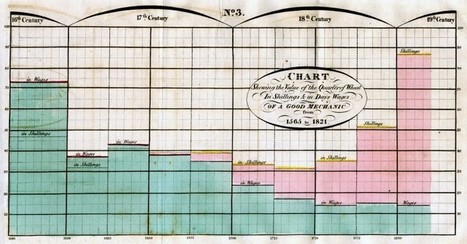

![Web Design Trends 2015 [Infographic] | E-Learning-Inclusivo (Mashup) | Scoop.it](https://img.scoop.it/L41KKlVHAbH6NFwnMzAQbDl72eJkfbmt4t8yenImKBVvK0kTmF0xjctABnaLJIm9)
